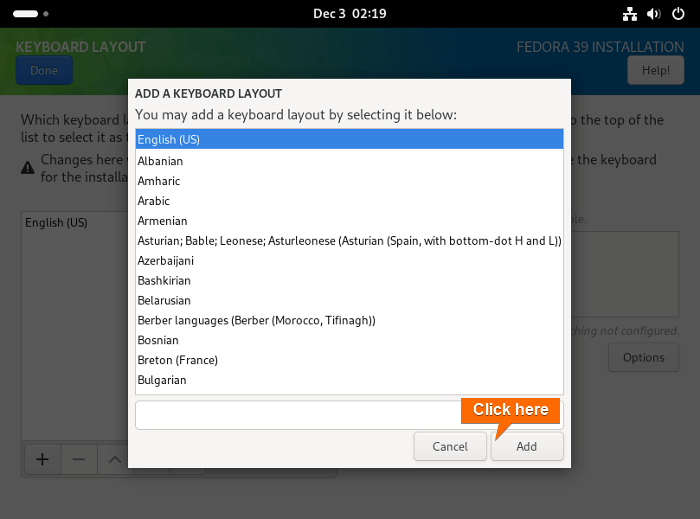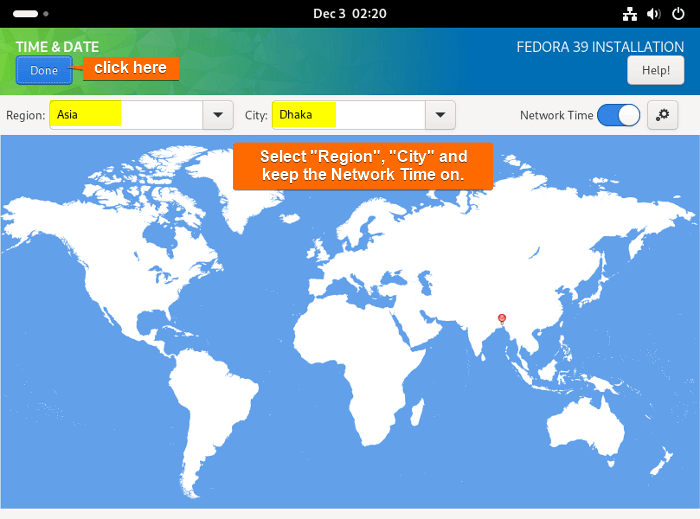Regarding Linux distributions, Fedora stands out as a reliable and cutting-edge option. Whether you’re a seasoned Linux user or a newcomer to the open-source world, installing Fedora on your system is straightforward. This step-by-step tutorial will guide you through the process of how to install Fedora, ensuring a smooth and successful setup.
What is Fedora?
Fedora is a popular open-source Linux distribution (operating system). It’s known for being on cutting-edge technology, incorporating the latest software and features while maintaining stability and security. Developed and maintained by the Fedora project, a community-driven project sponsored by Red Hat, Fedora serves as the upstream, bleeding-edge distribution for Red Hat Enterprise Linux (RHEL).
Key features and aspects of Fedora include:
- Community-Driven: Fedora is developed collaboratively by a diverse community of contributors, including developers, testers, designers, and documentation writers.
- Rapid Release Cycle: Fedora has a relatively short release cycle, with a new version typically being released every six months. This frequent release schedule allows users to access the latest software and technologies.
- Variants: Fedora offers different variants to cater to various use cases. The main editions include Fedora Workstation (for desktop users), Fedora Server (optimized for server environments), and Fedora IoT (Internet of Things).
- Package Management: Fedora uses the DNF (Dandified Yum) package manager, which simplifies the installation, removal, and management of software packages on the system.
- Desktop Environment Options: While Fedora Workstation defaults to the GNOME desktop environment, users have the flexibility to choose and install other desktop environments like KDE Plasma, Xfce, LXQt, and more.
Requirements to Install Fedora
- A 64-bit processor.
- Minimum 2 GB of RAM.
- Minimum 25 GB of available hard drive space.
Steps to Install Fedora
Before diving into the installation process, it’s always good practice to back up your important data before making any significant changes to your system.
To install Fedora follow the steps accordingly:
Step 1: Download the Fedora ISO File
First, download the Fedora ISO file from the official website of Fedora.
Step 2: Create a Fedora Bootable USB Drive
To create a bootable USB drive from the ISO file, you can utilize Etcher, an open-source application.
- Initiate by installing Etcher on either Windows or MacOS.
- Upon installation is complete, launch the application and Choose the “Flash from File” option.
- Next, pick the ISO file from the location where you downloaded it.
- After that, connect your USB pen drive to the computer and click on “Select target”.
- Select your USB drive from the list.
- Finally, click on Flash to start the ISO file on the USB drive.
Following that, Etcher will proceed to transfer the contents of the ISO file to your USB drive, thereby making it bootable.
Step 3: Boot Fedora Using Bootable Media
To boot Fedora from the USB drive follow the below steps:
- First, insert the bootable USB drive into the computer. Subsequently, power on/restart the computer, and the boot window will automatically appear.
- Navigate to Boot using the RIGHT arrow key and then keep the cursor on Removable devices using the Down arrow key.
- Now use the + key to move the “Removable Devices” option on the top.
- Navigate to Exit by using the RIGHT arrow (or you can press ESC) and keep the cursor on the Exit Saving Changes option. Then, press ENTER.
- Select Yes and press ENTER.
- After booting, the install window will appear on the screen. Here select “Start Fedora-Workstation-Live 39” using the UP and DOWN arrow and press ENTER.
- After a few minutes, the Fedora interface will appear. Here click on the “Install Fedora …”.
Step 4: Choose Language
Select your preferred language (for example ENGLISH) and click on Continue. 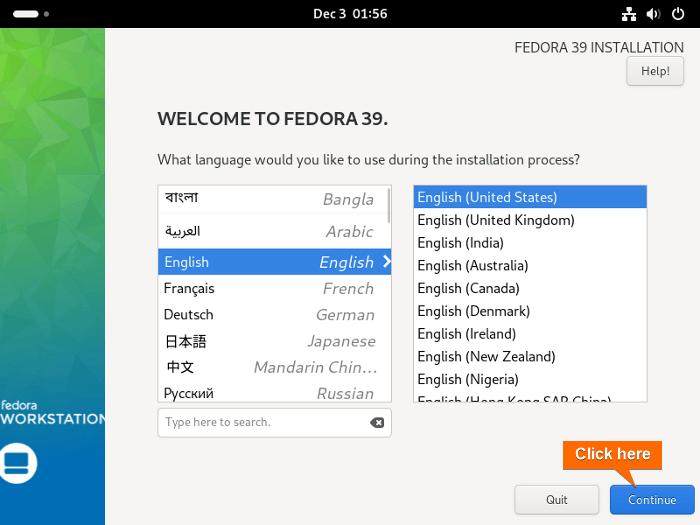
Step 5: Select Installation Destination
Now, click on Installation Destination on the “Installation Summary” prompt. Then select the “local standard disk” and click on Done.
Step 6: Disk Partitioning
To partition the disk:
- Navigate to “INSTALLATION DESTINATION” from the “Installation Summary” prompt.
- Then select the custom option in the “Storage Configuration” and click on Done.
- After that, click on the “Click here to create them automatically” option.
- Check the automatically created partitions and click on Done.
- Now, click on “Accept Changes”.
The created partitions are saved.
Step 7: Configure the Keyboard
To configure the Keyboard layout, Navigate to “KEYBOARD” from the Installation Summary. Then, click on the “+” icon. 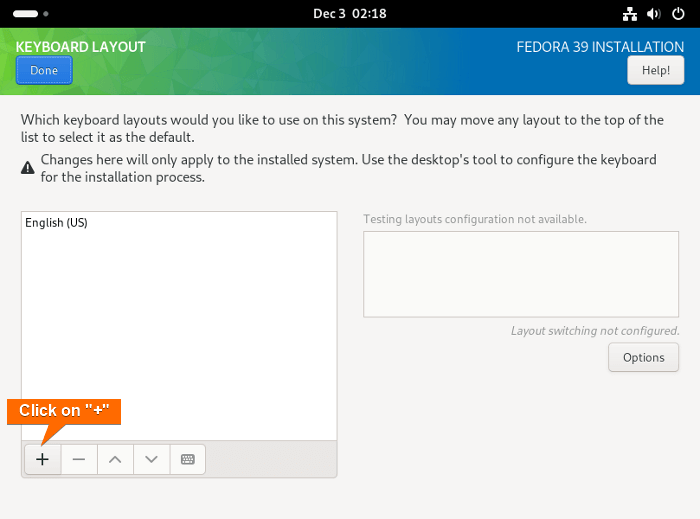
After that, this prompt will close, and then click on Done on the KEBOARD LAYOUT prompt.
Step 8: Configure Timezone
To configure Timezone, navigate to “Time & Date” from the “Installation Summary” prompt. Then select the “Region”, and ‘City”. Keep turned on the “Network Time”.
Step 9: Start Installation
After all the configuration is done, click on the Begin Installation option. 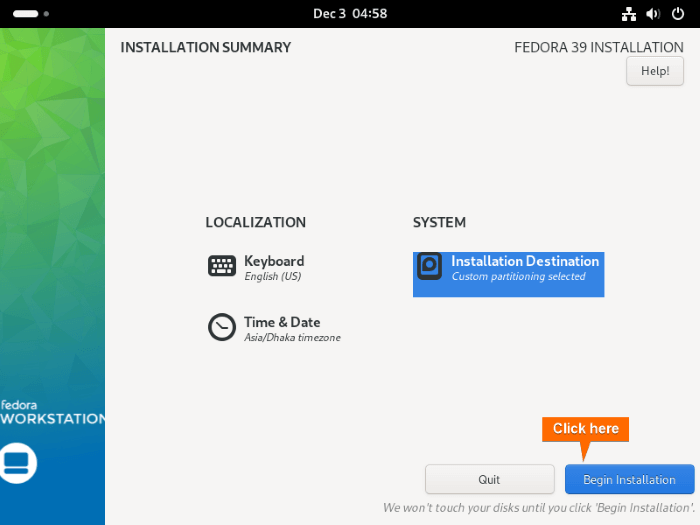
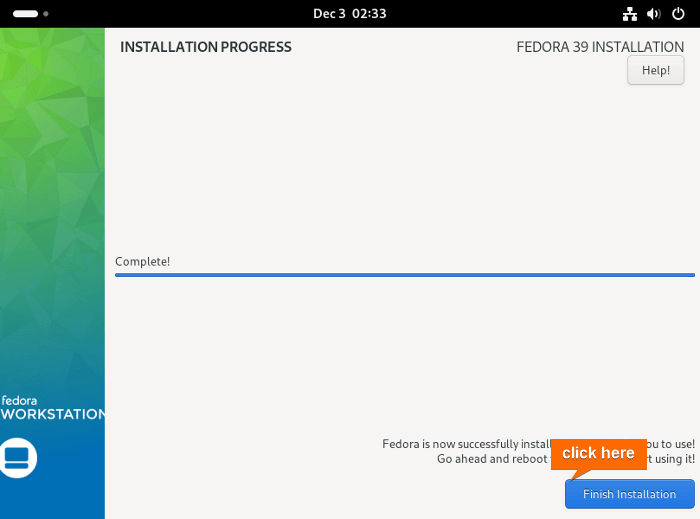
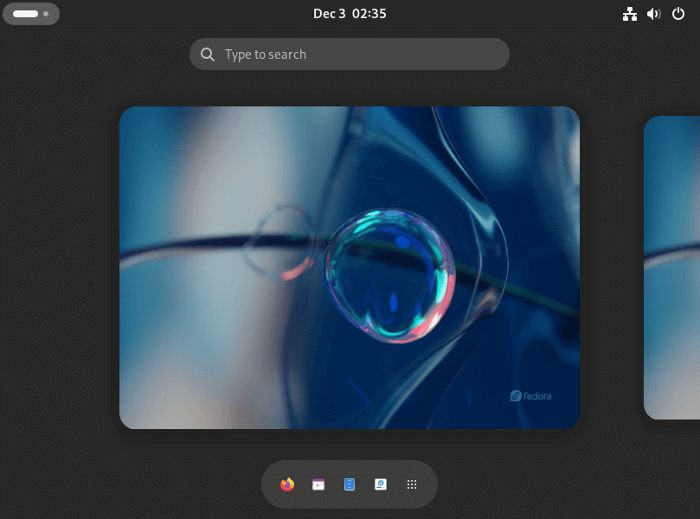
Conclusion
To sum up, installing Fedora empowers users to experience the robust features of this open-source Linux distribution. As you embark on your Fedora journey, remember to stay engaged with the Fedora community, where you can find support, share experiences, and contribute to the ongoing development of this vibrant and dynamic ecosystem. Whether you’re a seasoned Linux enthusiast or a newcomer to the
People Also Ask
Is Fedora Faster than Windows?
The speed comparison between Fedora and Windows depends on specific tasks and hardware. Fedora, known for efficiency, can feel faster on certain systems, especially with its resource-friendly nature. Windows may outperform in gaming and certain professional applications. However, individual preferences and use cases play a significant role.
Does Fedora have KDE?
Yes, Fedora supports multiple desktop environments, including KDE. Fedora offers different “spins” that provide variations of the default GNOME desktop environment with alternatives such as KDE Plasma, Xfce, LXQt, and more.
Is Fedora a Stable OS?
Yes, Fedora is a stable operating system that strikes a balance between cutting-edge features and reliability. Its release cycle emphasizes regular updates, ensuring access to the latest innovations while maintaining stability through rigorous testing and quality assurance.
Which is Better Ubuntu or Fedora?
The choice between Ubuntu and Fedora depends on individual preferences, use cases, and familiarity with each distribution. Ubuntu is often preferred by beginners and those seeking long-term support, while Fedora appeals to users who want a balance between cutting-edge features and stability. Both have thor strength and are widely used in the Linux community.
Does Fedora have GCC?
Yes, Fedora includes the GNU Compiler Collection (GCC) in its repositories. GCC is a powerful set of programming language compilers that supports languages like C, C++, Fortran, and others. In Fedora, you can install GCC using the package manager, typically using the command sudo dnf install gcc.
Related Articles
- How to Install Debian 12 (Bookworm) [A Complete Guide]
- How to Install Kali Linux [Step by Step]
- How to Install Ubuntu [Step by Step]
- How to Install Ubuntu Server?
- How to Install Kubuntu [A Step-by-Step Guide]
- How to Install Lubuntu [Step-by-Step]
- How to Download & Install Xubuntu [Easiest Guide]
- How to Install Linux Mint 21.2 Victoria [Easy Guide]
- How to Install Zorin OS 16 [Easiest Guide]
- How to Install Red Hat Enterprise Linux [Simple Guide]
- How to Install CentOS 9 [Easiest Guide]
<< Go Back to Linux OS Single Installation | Linux OS Installation Guide | Learn Linux Basics
FUNDAMENTALS A Complete Guide for Beginners

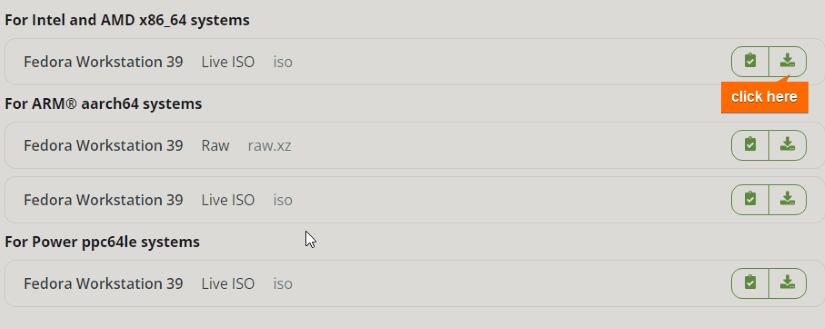
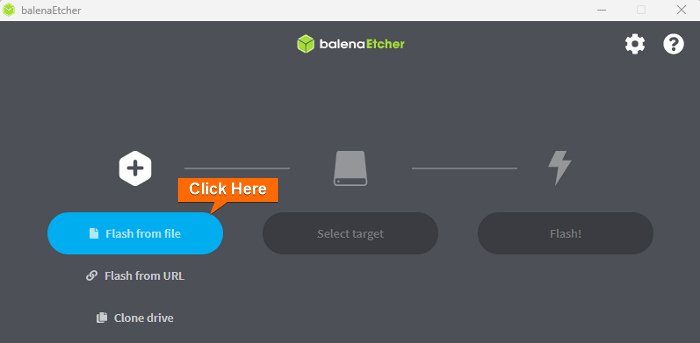

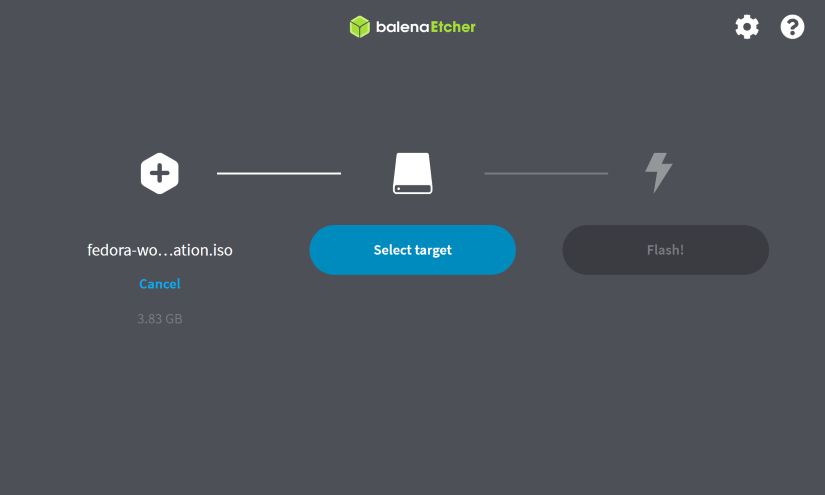
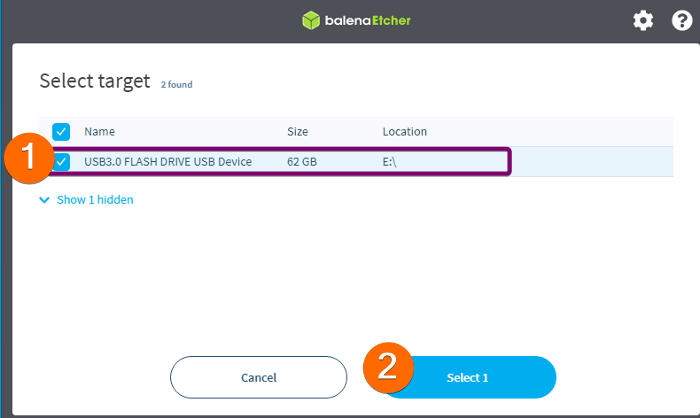
 Following that, Etcher will proceed to transfer the contents of the ISO file to your USB drive, thereby making it bootable.
Following that, Etcher will proceed to transfer the contents of the ISO file to your USB drive, thereby making it bootable.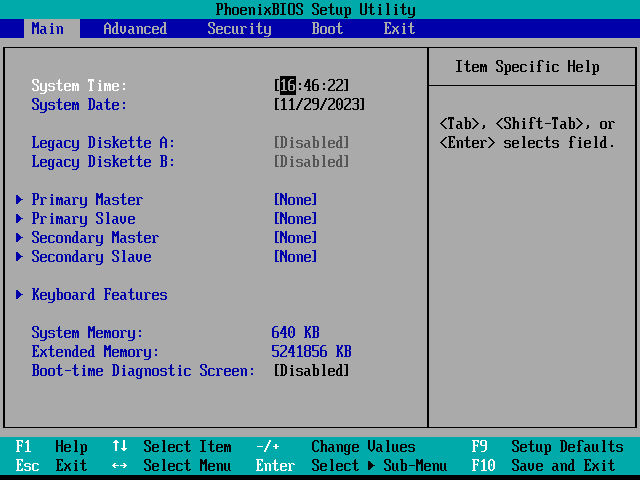
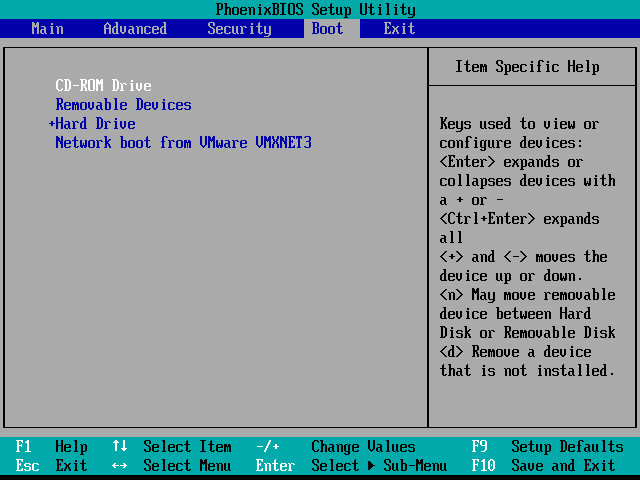

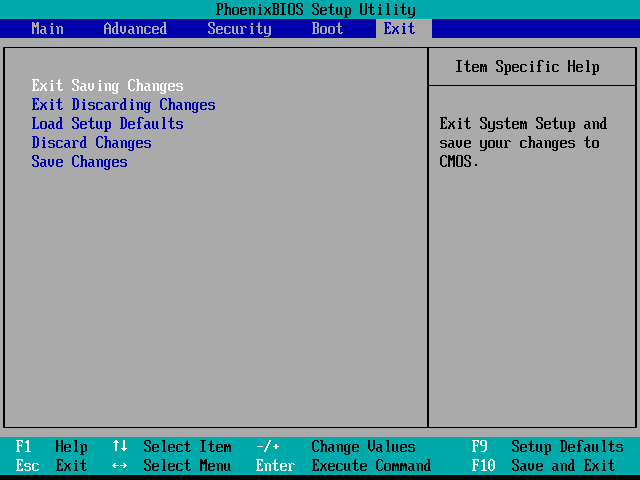
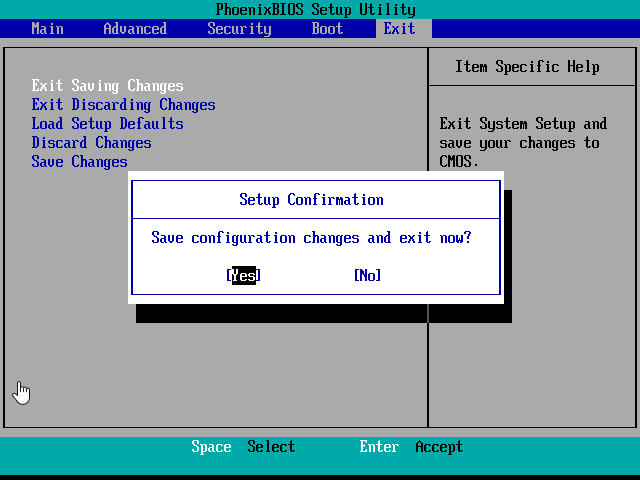
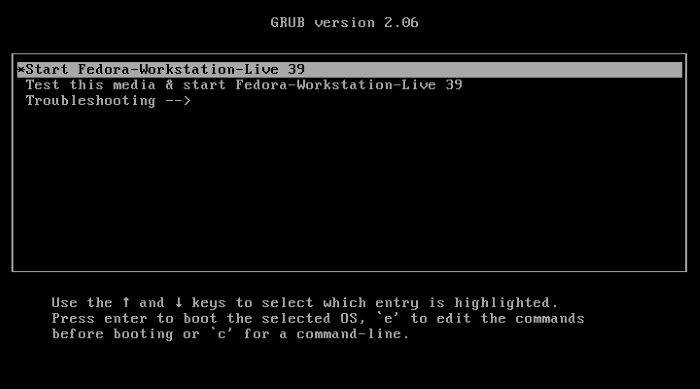

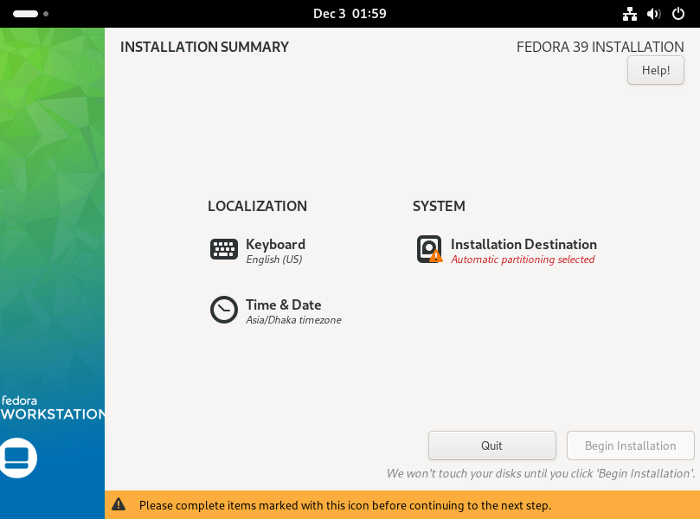
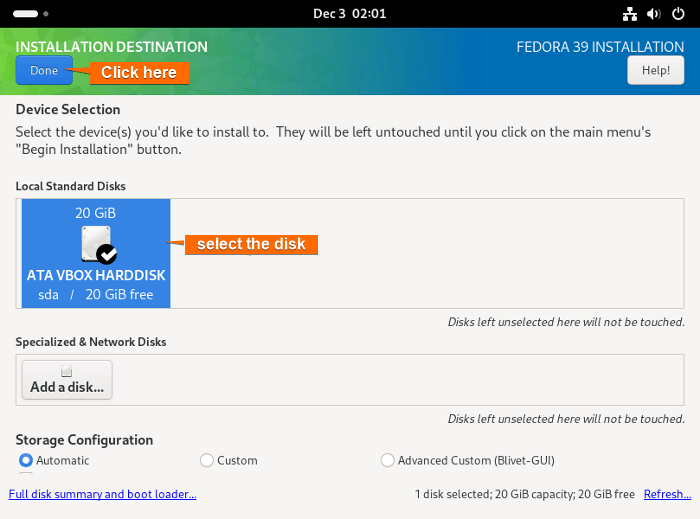
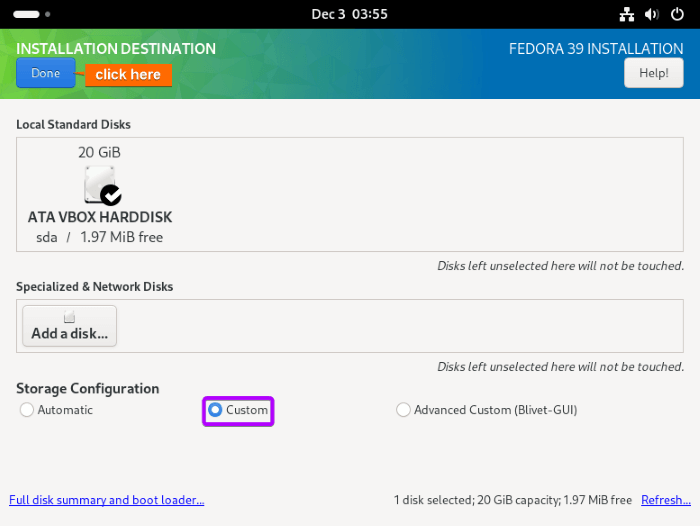
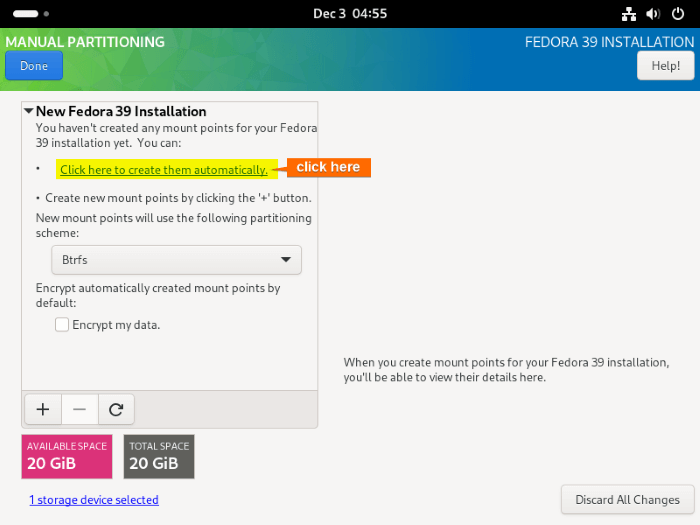
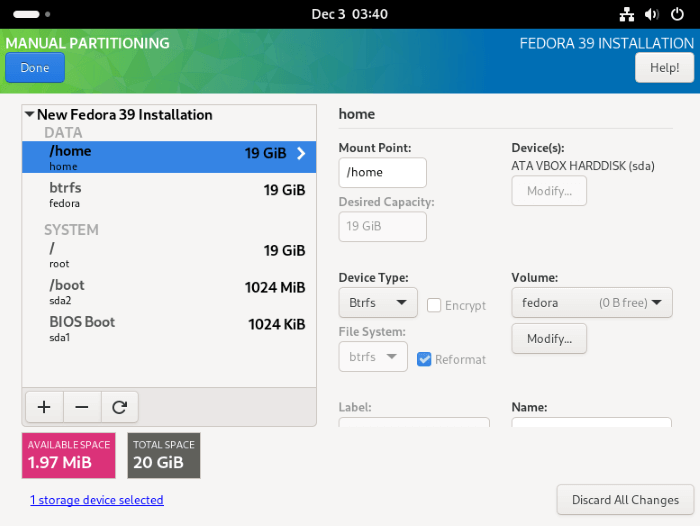
 The created partitions are saved.
The created partitions are saved.